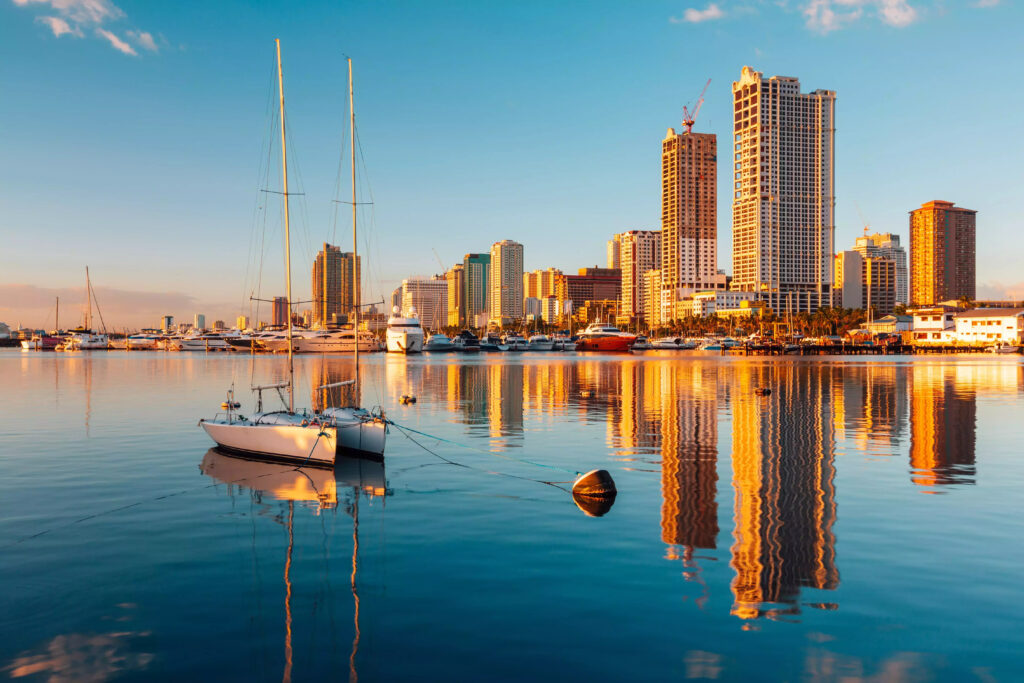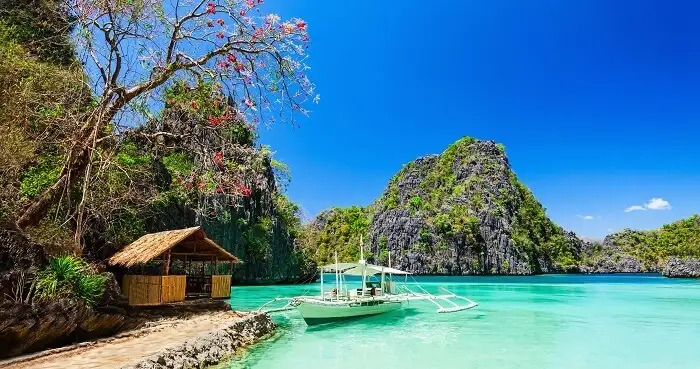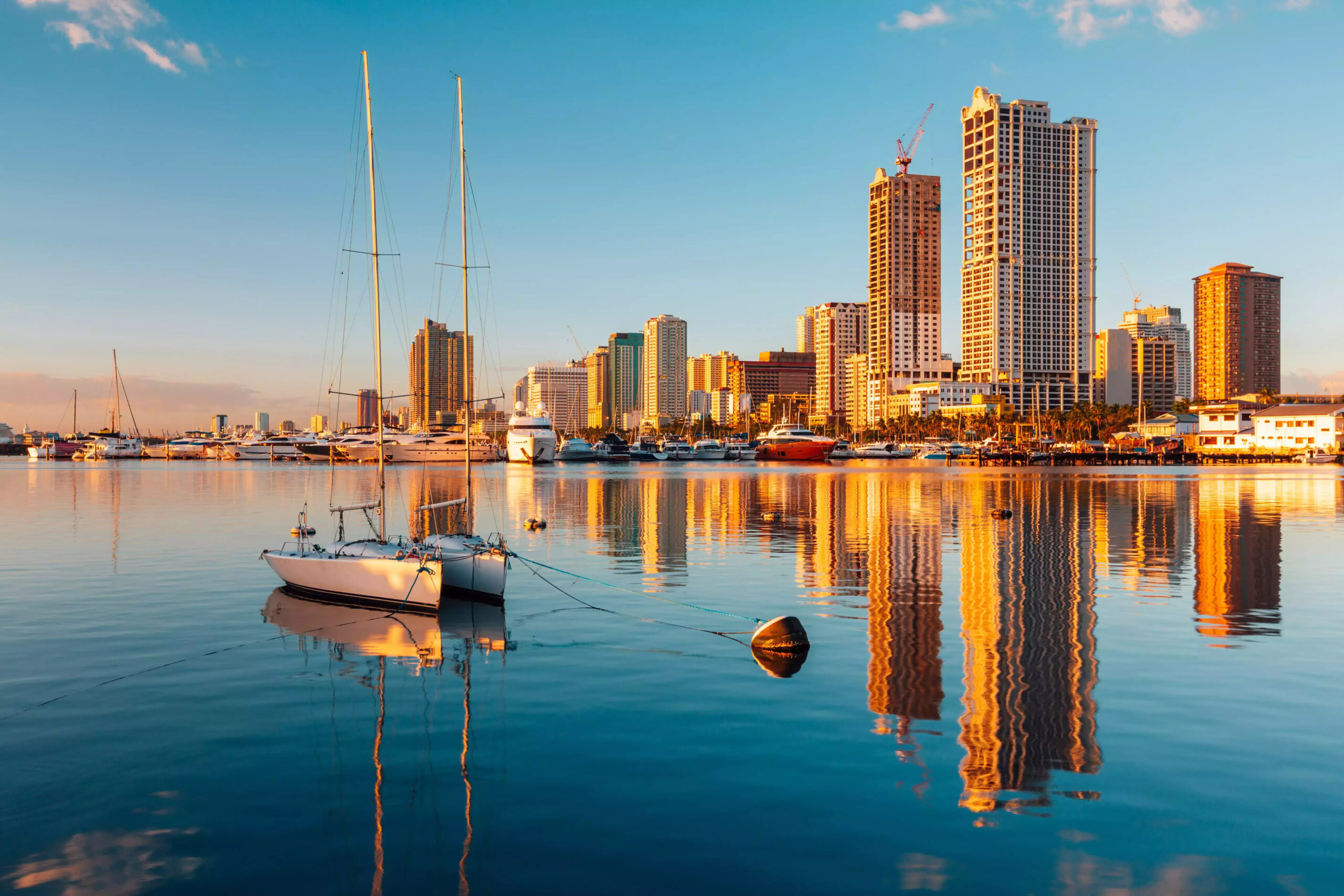Table of Contents
ToggleTop 10 Amazing and Unknown Facts about Philippines
Southeast Asian archipelago of the Philippines is fascinating, with a rich cultural heritage, varied landscapes, and an active historical past. Even though the nation’s gorgeous beaches and welcoming citizens are well-known, there are a ton of little-known details that add to its intrigue.
With more than 8.2 million visitors annually, the Philippines is gradually rising to the top of the global tourism hotspot list. While tourists adore exploring the stunning islands of the Philippines and taking in the country’s urban culture, mouthwatering food, and abundant fruits, there are certain things that they still don’t know!

The Republic of the Philippines is an island nation in the Pacific Ocean close to the equator. Out of the total 7,640, 2,000 are inhabited and collectively make up an archipelago. The Philippines is a land of contrasts; from vibrant cities to breathtaking beaches and mountains, there is much to explore.
We’ll delve into the history, culture, natural wonders, and other aspects of the Philippines in this blog article as we examine the Top 10 unknown facts about it.
1. The Philippines Is an Archipelago of Over 7,641 Islands
People frequently picture the Philippines when they think of its well-known islands, such as Mindanao, Visayas, and Luzon. Many people are not aware, nonetheless, that the nation is one of the world’s largest archipelagos, consisting of over 7,641 islands. Only around 2,000 of these islands are populated, and more than 5,000 are still unidentified on most maps of the world. The enormous biodiversity and cultural variety of the Philippines are a result of their enormous number of islands.
Historical Context: The nation’s archipelagic terrain has influenced trade routes, cross-cultural interactions, and even the political climate throughout its history. The islands were home to a number of sovereign kingdoms and tribes with their own unique cultures and languages during the pre-colonial era.
Cultural Impact: With English and Filipino serving as the official languages, the nation’s many islands have also given rise to over 175 different languages spoken there. This language diversity is evidence of the Philippines’ rich cultural heritage.
2. The Philippines Has the World’s Longest Christmas Season
Nowhere is the passion of celebration that Filipinos are known for more apparent than in their celebration of Christmas. The longest Christmas season in the world is found in the Philippines, where it starts in September and lasts until January.
Cultural Significance: The Filipino people’s steadfast Christian faith is shown in the lengthy Christmas season. Due to more than 300 years of Spanish occupation, almost 86% of the population is Roman Catholic. Christmas carols, decorations, and festivities abound during the “ber” months of September through December, which culminate in the lavish celebrations on Christmas Eve and New Year’s Day.
Unique Traditions: The Filipino people observe a number of customs during this time, including Noche Buena, a joyous midnight feast on Christmas Eve, and Simbang Gabi, a nine-day sequence of dawn masses preceding Christmas. These customs emphasize the value of community, faith, and family in Filipino culture.
3. The Philippines Is Home to the World’s Smallest Active Volcano
The smallest active volcano in the world is called Taal Volcano, and it is situated on the island of Luzon. At only 311 meters high, Taal is one among the Philippines’ most active and deadly volcanoes despite its little size.
Geological Significance: Taal Volcano is located in the Pacific Ring of Fire, an area renowned for its regular volcanic eruptions and earthquakes. It is special because Taal Lake, a lake that was formed by the crater of a much larger prehistoric volcano, is home to a volcano.
Tourist Attraction: The volcano’s stunning scenery and close proximity to the nation’s capital, Manila, make it a well-liked travel destination. Hikers frequently ascend to the crater to take in the breathtaking view of the nearby lake and islands. However, the Philippine Institute of Volcanology and Seismology (PHIVOLCS) keeps a constant eye on the volcano because of its unpredictable nature.

4. The Philippines Was the First Asian Country to Win an Olympic Medal
The Philippines was the first nation in Southeast Asia to win an Olympic medal, something that many people may not be aware of. Teófilo Yldefonso, a Filipino swimmer, made history in the 1928 Olympics in Amsterdam when he earned a bronze medal in the men’s 200-meter breaststroke competition.
Sports Legacy: Yldefonso’s triumph cleared the path for many Filipino athletes to succeed internationally. Since then, the Philippines has won twelve Olympic medals, its first gold medal coming from weightlifter Hidilyn Diaz at the 2020 Tokyo Olympics.
Cultural Impact: As a result of Filipino athletes’ achievements, the nation has developed a robust sports culture, with activities like weightlifting, boxing, and basketball becoming increasingly popular. World-class boxer Manny Pacquiao is among the most recognizable individuals in Filipino sports history.
5. The Philippines Has the Largest Catholic Population in Asia
The Philippines is home to the largest Catholic population in Asia and the third-largest in the world, behind Brazil and Mexico, with over 86% of its people identifying as Roman Catholics.
Historical Origins: Ferdinand Magellan’s arrival on the island of Cebu in 1521 marked the start of Spanish colonization, which is responsible for the nation’s strong Catholic ties. The Spanish colonists converted most of the native inhabitants to Christianity over the course of the following three centuries, erecting countless churches and cathedrals throughout the archipelago.
Religious Influence: The Catholic faith is very important to Filipino daily life. Catholic customs are closely entwined with significant life events, including marriages, baptisms, and funerals. Every year, religious celebrations like Sinulog and the Feast of the Black Nazarene draw millions of followers, exhibiting the rich religious heritage of the nation.
6. The Philippines Is the Texting Capital of the World
A startling truth about the Philippines is that it’s known as the “Texting Capital of the World.” With an estimated 400 million SMS messages sent every day, Filipinos send more text messages per person than anyone in any other nation.
Cultural Phenomenon: When mobile phones became more widely available and affordable in the early 2000s, text messaging became popular in the Philippines. Because texting is convenient and affordable, it quickly gained popularity as a communication tool, especially in a nation where a large portion of the population lives in rural areas with little access to other kinds of communication.
Social Impact: Text messaging has greatly impacted social relationships as well as political movements in Filipino society. Millions of Filipinos utilized SMS to coordinate protests that resulted in the resignation of then-President Joseph Estrada, a renowned example of the power of texting during the EDSA II Revolution in 2001.
7. The Philippines Is the Only Country in the World with a Jeepney
One of the most recognizable images of Filipino culture is the jeepney. Jeepneys, which were first constructed from leftover military jeeps that the Americans left behind after World War II, are now the most widely used form of public transportation in the Philippines.
Cultural Significance: The vibrant and frequently ornately decorated exteriors of jeepneys are a well-known representation of the uniqueness and inventiveness of Filipino drivers. Every jeepney is different, with designs that frequently feature family names, religious imagery, or nationalistic emblems.
Economic Role: Jeepneys play a vital role in the everyday lives of millions of Filipinos in the Philippines by offering reasonably priced transportation. They have, however, also generated controversy because of problems with pollution, traffic jams, and government initiatives to update the public transportation network.

8. The Philippines Is One of the World’s Largest Producers of Coconut
With over 25% of the world’s total coconut production, the Philippines is one of the top exporters and producers of coconuts worldwide. Millions of Filipinos depend on the coconut sector for their living, which is extremely important to the nation’s economy.
Economic Impact: One of the main agricultural exports from the nation is coconut goods, such as coconut oil, coconut water, and dried coconut. About 3.5 million farmers are employed by this sector, which also occupies about 26% of the nation’s agricultural land.
Cultural Significance: The “tree of life,” as the coconut is referred to locally, is a fundamental part of Filipino culture. It is a common ingredient in many regional cuisines, drinks, and even religious rituals. At celebrations like the Pahiyas Festival in Lucban, Quezon, when houses are adorned with coconut goods and other farm produce, people honor the coconut’s adaptability.
9. The Philippines Is the World’s Second-Largest Archipelago
After Indonesia, the Philippines is the world’s second-largest archipelago, spanning 7,641 islands and a total land area of around 300,000 square kilometers. This distinctive topography has influenced the history, culture, and wildlife of the nation.
Biodiversity Hotspot: An astounding array of plant and animal species can be found in the nation’s varied habitats, which range from coral reefs to rainforests. The Philippines is home to several indigenous species, making it one of the world’s 17 megadiverse nations.
Environmental Difficulties: Deforestation, pollution, and the effects of climate change are just a few of the environmental difficulties that the Philippines faces, despite its tremendous biodiversity. To preserve the nation’s natural legacy for upcoming generations, conservation efforts are still being made.
10. The Philippines Has a Rich Pre-Colonial History
The Philippines has a dynamic and complex pre-colonial history that is less widely recognized, despite being most commonly linked to its colonial past under Spanish, American, and Japanese authority. The Philippines was home to numerous kingdoms and towns with distinct political, economic, and cultural systems prior to the entrance of European colonists.
Cultural Heritage: The Filipino people of pre-colonial times were adept at several crafts, including metalworking, weaving, and ceramics. Their culture and manner of life were also impacted by their substantial trading with nearby nations like China, India, and the Malay Archipelago.
Historical Evidence: Archaeological discoveries that provide light on the pre-colonial history of the Philippines include the Laguna Copperplate Inscription, which is the earliest known written text in the country, as well as the uncovering of ancient artifacts and burial sites. These findings demonstrate the intelligence and complexity of pre-Filipino societies.
Conclusion
The Philippines is a surprising country with a plethora of unknown facts that only serve to heighten its appeal. The Philippines is a country that never fails to enthrall and inspire, thanks to its distinct landscape, abundant wildlife, deeply ingrained cultural customs, and significant historical background. Whatever your interest, there’s always something new to learn about this stunning archipelago, be it history, wildlife, or just plain curiosity.
We hope to have illuminated the lesser-known facets of the Philippines and provided a greater understanding of the nation and its people by going over these top 10 unknown facts. Remember that the Philippines is a country with a rich history, a diversified population, and countless opportunities the next time you envision a tropical paradise.


